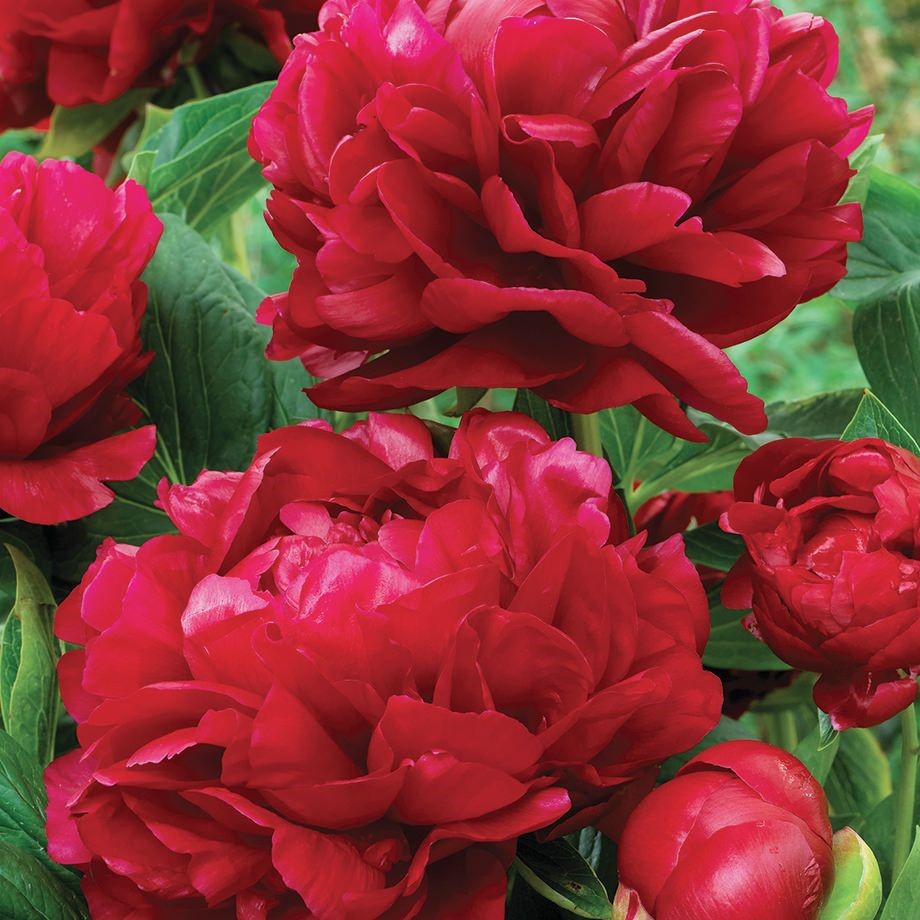By Jane Ying, Master Gardener, SCMG
What plants should I add to my garden to fill the bare spots?
What will be a good plant to replace the one that no longer meets my expectations?
What plants should I look for in creating my new “dream” garden?
If you have ever had any of these questions, this article will be helpful to you.
I had the same questions, so I asked my fellow Simcoe County Master Gardeners (MGs) what they had been growing in their own gardens that were their favorite and “must-have” plants. Based on their answers, I compiled a list of 52 plants favoured by Simcoe County MGs. Not only do these plants have remarkable features, that over time have become the MGs’ “must-have”, but they are also plants that can thrive in local climate and conditions because they have been growing well in the MGs’ gardens.
Included in the 52 favorite plants are annuals, shrubs and trees, and many herbaceous perennials. Some are garden classics, and some are native plants. They are listed, by alphabetical order, in Table 1.
Of the 52 plants, 4 plants stand out as that are repeatedly mentioned by MGs as their favorite plants. These 4 plants are:
Peony (Paeonia spp)
Common characteristics:
Herbaceous perennial, mature bushes grow to 3 to 4 feet tall and wide, bloom from late spring to early summer, prefer full sun but will tolerate light shade
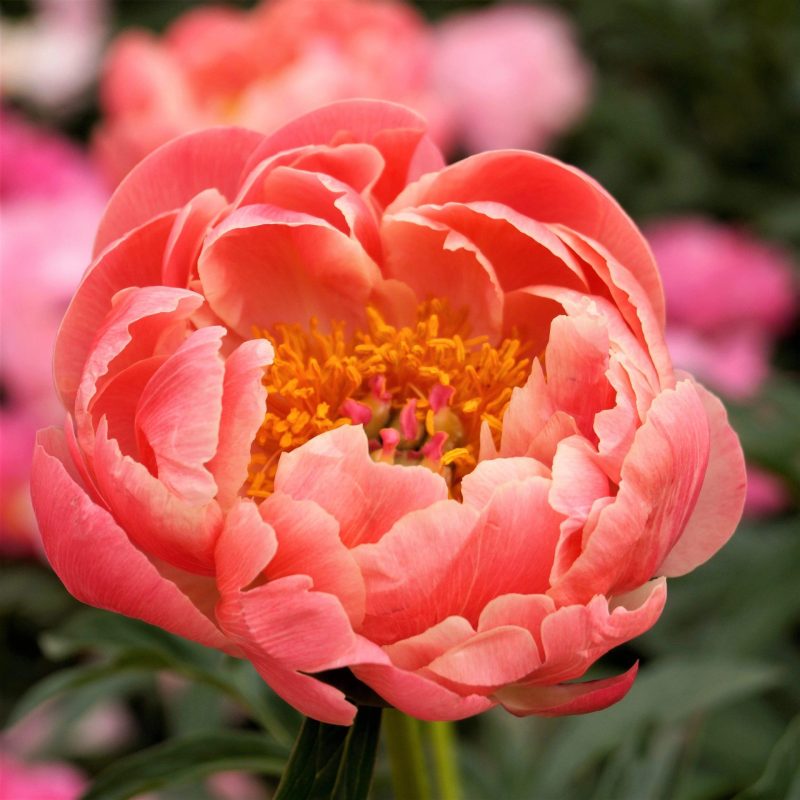
Why MGs love it:
- Early, stunning, and massive flowers resembling huge roses
- After blooming, lush green foliage remains attractive throughout the summer
- Easy to care for and pest resistant
- Many varieties are fragrant
- A wide range of colors and flower shapes
- Gorgeous cut flowers
Growing tips:
- Many varieties, especially double peonies, need staking while in bloom to support their large and heavy flowers, particularly after heavy rainfall. Several newer varieties, including the “Itoh” peony, have stronger stems to prevent “drooping” flower heads.
- Try to avoid moving a peony after planting. Although peonies can be moved, it may take a year to two for the plants to settle and start to bloom again.
False Indigo (Baptisia hybrid)
Common characteristics
Herbaceous, native perennial in the legume family, mature bush grows to 3 to 4 feet tall and wide, bloom from spring to early summer, full sun to partial sun
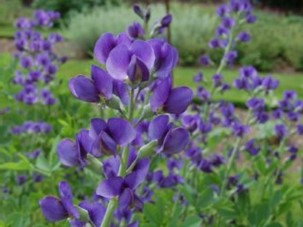
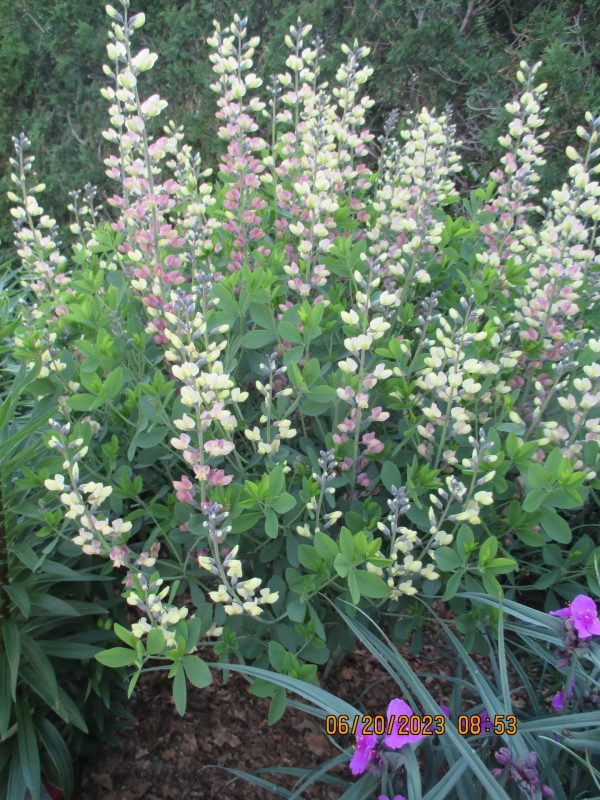
Why MGs love it
- Unique, specimen plant keeping its upright and tidy shape even after blooming
- Eye-catching, long-lasting, bright blue or yellow flowers depending on the variety
- Attractive seed pods for fall and winter interest
- Pest resistant and easy to care for
- Native plant
- Attracts butterflies
Growing tips:
- Plant it where you want it to bloom; difficult to move or transplant with its long tap root. Keep in mind that a mature plant is as big as a small shrub.
- May take 1 to 2 years for the plant to bloom, so be patient!
Lavender (Lavandula angustifolia)
Common characteristics
Herbaceous perennial, grow to 1 to 3 ft tall and wide, bloom in July and August, prefer full sun and tolerate part shade, plant in well-drained soil, drought tolerant
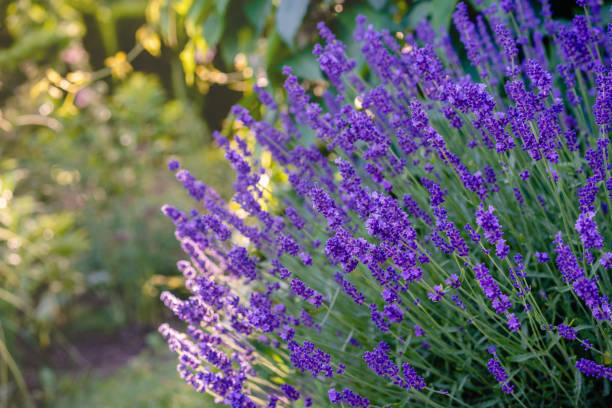
Why MGs love it
- Fragrant, naturally help repel mosquitoes
- Its greyish foliage and spiky leaves provide a nice contrast to other plants
- Great for mass planting; “see-through” plants
- Easy to care for, hardy, and pest resistant; rabbits won’t eat it
- Several varieties are edible
Growing tips
- In mid-April cut back the entire plant by one-third to promote new bushier growth. Cut back again after blooming in summer to enable a second bloom later in the fall. The second bloom will not be as profuse as the first one.
Iris (Iris spp)
Common characteristics
Herbaceous perennial, height varies depending on the variety, bloom from late spring to early summer; prefer full sun and well-drained moist soil
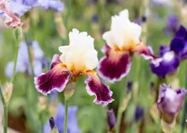
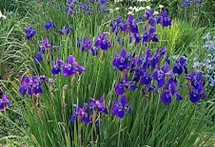
Why MGs love it
- Showy, tall mass of beautiful flowers in many shapes and colors
- Foliage remains attractive and enhances other plants
- Hardy and easy to care for
- Gorgeous cut flowers
Growing tips
- Bearded irises need to be divided every 3 to 4 years to prevent the center from dying off
- Avoid planting bearded irises in spots where puddles can form; Siberian irises, on the other hand, tolerate wet conditions
There are so many kinds and varieties of plants for gardeners to choose. This can be a daunting task. Table 1 contains a list of 52 MGs’ favorite plants that can help you narrow down your choices. These plants have become MGs’ favorites because of their remarkable features, and they are reliable and will do well in our local conditions. If you haven’t had all four of the top favorite plants (peony, false indigo, lavender, and iris) in your garden, consider adding them to your garden if growing conditions allow.
| Table 1 | ||
| Simcoe County Master Gardeners | ||
| Member “Favourite Plants” 2023 Survey Results | ||
| Alphabetical Order by Common Name (Revised June, 2024) | ||
| Annual | Herbaceous Perennials | |
| Geranium | Allium | Horned Rampion |
| Mallow | Anise hyssop | Hosta (variegated) |
| Snapdragon | Barren strawberry | Iris |
| Sunflower | Beardtongue | Italian Arum |
| Shrub/Tree | Bee balm | Japanese Painted Fern |
| Azalea | Bloodroot | Lady’s Mantle |
| Black gum | Butterfly Milkweed | Lavender |
| Carolina Allspice | Canadian Anemone | Ligularia |
| Crab apple | Cardinal flower | Mint |
| Old Fashioned Weigela | Coral bells | Monkshood Wolfsbane |
| Redbud | Crocosmia Montretia | New York Ironweed |
| Silverberry | Delphinium | Oakleaf Hydrangea |
| White pine | Dianthus | Pasque flower |
| Witch Hazel | False Indigo | Peony |
| Foamflower | Prairie Smoke | |
| Giant Fleece Flower | Rusty Foxglove | |
| Globe thistle | Salvia | |
| Hellebore | Sedum | |
| Hens and Chicks | Shasta daisy cultivars | |
| Yarrow | ||

